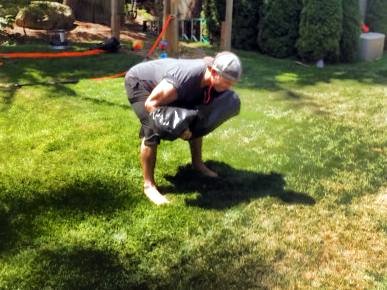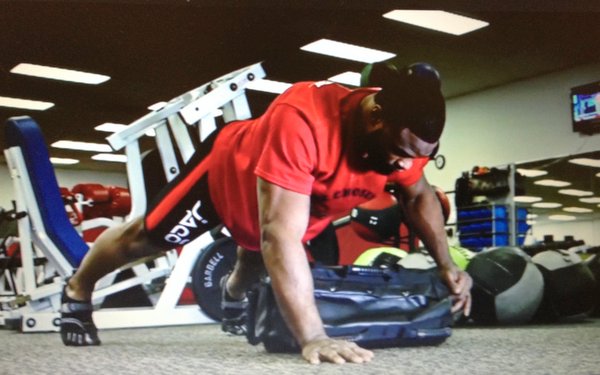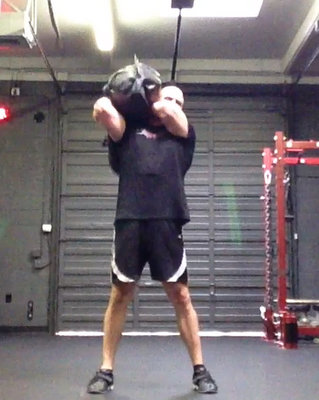It was only about 15 years ago when the deadlift was vilified. If you coached your clients to perform the deadlift, you were almost considered an irresponsible trainer. Only the super hardcore, "crazy" lifters really did it!
It’s hard to believe that I’m talking about the deadlift. In the late 90’s, it was very rare to find people performing it—at the time, many people thought it was hard on your back, dangerous, and not something that everyday people should be doing. Now, the deadlift has had one of the biggest turn-arounds in fitness. Now it is touted as a corrective exercise, one of the most functional drills, and appears in nearly every fitness magazine workout. Pretty crazy!
Now only one question remains—how do we help people improve their deadlift?
The deadlift’s resurgence in popularity has a lot to do with the hip hinge dominating the movement. Learning how to load the hips is essential for people who want to actually help their low backs, increase performance, and gain real world strength. Yet, the deadlift has other important aspects past the hip hinge that many people overlook.
Links in the Chain
While we most often associate the deadlift and the posterior chain (hamstrings, glutes, and low back), the deadlift is really a function of connecting the entire body. Try standing up and slumping your shoulders, now, try to round your low back. It’s pretty easy to do. This time, stand back up, hold your shoulders down and back and while keeping this position, try to round your low back. It’s much harder to do!
Now you can really see how important the upper body is when performing the deadlift. Truthfully, one of the best benefits of the deadlift is that it teaches the upper body (trunk) and lower body to work together. This benefit is also one of the biggest challenges of the movement. How do we teach this concept so that people understand how to make the body move as one unit not as disconnected pieces?
Like many other functionally-based exercises, that understanding is the biggest challenge. The deadlift requires a lot of multi-tasking! We have to understand how to hip hinge (a feat in itself), brace through the trunk like a moving plank, and keep an active upper body to help maintain alignment and posture. The deadlift is not as easy as some may think!
I want to share four strong solutions to improve your deadlift. These drills might also dramatically change how you see movement.
These four drills are not the usual "make your deadlift better" drills. We are going to examine the big picture of how to make stronger connections and better movement.
Front-Loaded Good Morning:
This is a super simple looking drill that becomes a powerhouse exercise with the right intent. Holding an
Ultimate Sandbag in the front-loaded position instantly makes every movement a dynamic plank. Why not just plank more? Because in real life, we need the ability to brace our torso when we move. The Front-Loaded Good Morning is an easy exercise to test for this ability. With an active upper body, we will learn how to create tension throughout the entire body to develop the proper stability. One more little benefit of this drill—it also teaches us how to
hip hinge!

Lateral Drag:
One of the keys to developing real world strength is to constantly look for what strength coach, Dan John, calls "leakages". Yes, that sounds bad, but the phrase really refers to finding movement compensations stop your strength from reaching its full potential.
The Lateral Drag uses the friction of the Ultimate Sandbag moving on the ground to create an environment where strength leakages in the upper body, trunk, and even lower body cannot hide. People who love crawling will appreciate the strong cross patterning created and challenged by this drill. The Lateral Drag makes the body smarter and stronger!
 UFC Fighter, Tyron Woodley demonstrates the Ultimate Sandbag Lateral Drag
UFC Fighter, Tyron Woodley demonstrates the Ultimate Sandbag Lateral Drag
Rotational Lunge:
A lunge? Really? I know you already perform about three lunges when practicing get-ups, but this drill is much different. Lunging continues to be an undervalued movement (
click here for a whole article written on that subject), but it can be extremely important for improving your favorite lifts like deadlifts.
The Rotational Lunge makes the lunge movement even better! Lunges challenge our mobility, stability, and strength not just up and down, but side to side as well. Why do people hate lunging? Because when lunging, light weights will sometimes humble even the strongest people.
The
Rotational Lunge is one of the STRONGEST multi-planar exercises. Our bodies move in three planes of motion, not just up and down. It’s funny that while walking works in all three planes, most of our gym exercises only go up and down. The Rotational Lunge accomplishes everything that a basic lunge does, but amps up the challenge by requiring the body to stay strong in all three planes. This is the same connectedness that is also so important for the deadlift. With the Rotational Lunge, it doesn’t take much weight to find your weak links!
Shouldering:
In some ways, Shouldering is more advanced that the deadlift. I would even suggest that it could be more helpful for those looking for an edge with their deadlift than for beginners. By starting with our hands in contact with the ground, Shouldering requires a huge range of motion, and has the lowest starting point of any exercise. Our bodies have to get low, and some people do not yet have the strength or mobility to do so.
Shouldering also requires a good amount of power from a dead stop, and without momentum. For Shouldering, you will need to know how to tense everything properly to create enough force to move the weight, and to resist the forces created by the moving Ultimate Sandbag. Otherwise—as evidenced by videos on YouTube—an ugly wrestling match that looks anything but functional can happen!

Add in a one sided load to a position that looks a lot like a strong standing side plank and you have another
DVRT Ultimate Sandbag Training exercise with about five or six benefits for your strength training.
Thinking about the big picture of movement and strength will allow you to problem solve and excel in your training. You can have variety—purposeful variety. I would suggest that you select no more than two of these DVRT variations for any one workout. Choose drills that don’t compete such as Front Loaded Good Mornings with Rotational Lunges, or Shouldering with Lateral Drags. You will soon be amazed at how much stronger and more resilient you will be.
Senior RKC, Steve "Coach Fury" Holiner has some insightful words about the power of this concept:
"Using DVRT to challenge a person’s lateral and anti-rotational stability has reaped big benefits on the deadlifts of my own and my clients. Being strong and stable in other planes of motion will really help you wedge between the bar and the floor and get a solid pull when life gets heavy. Lateral lunges and shoulder squats are two of my faves for this purpose. Adding cleans to those lateral lunges, or staggered stance cleans will not only strengthen your stability it will also help generate some extra power for that initial pull off the floor."